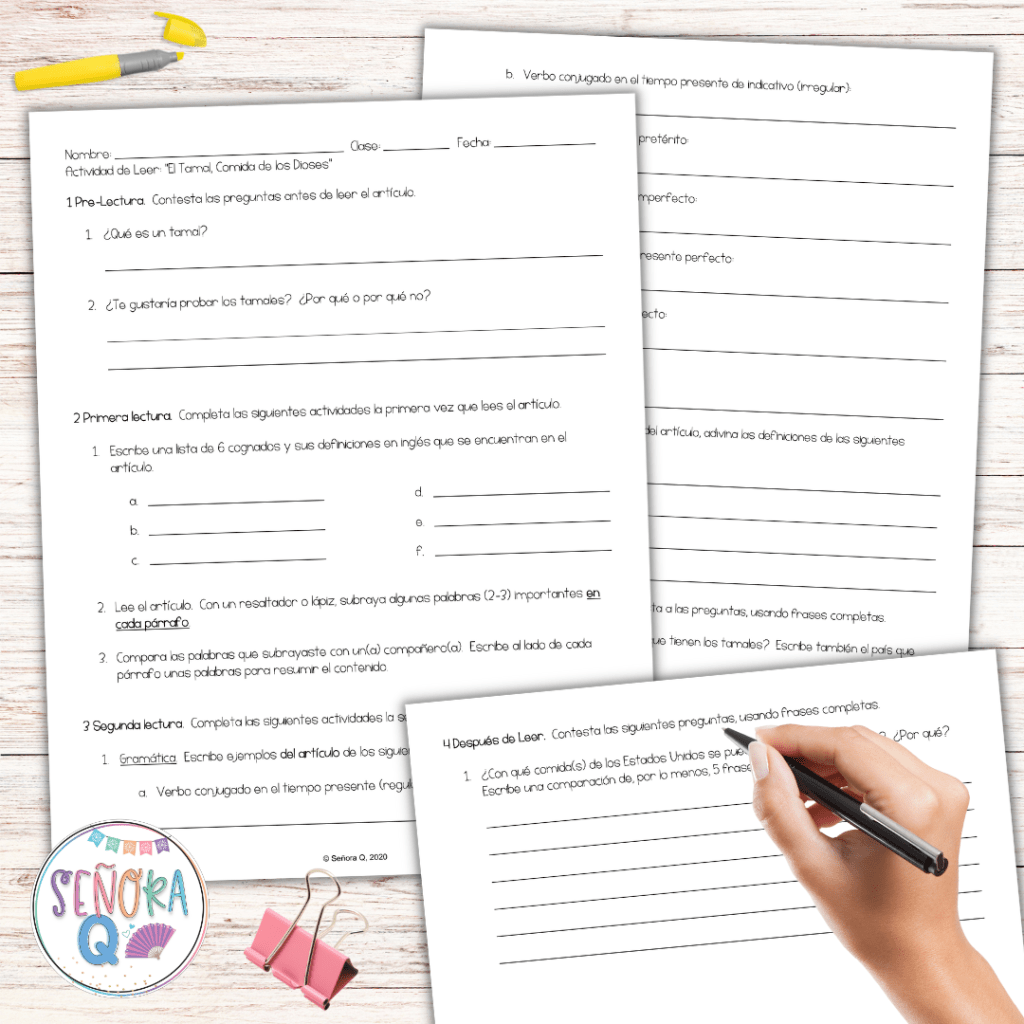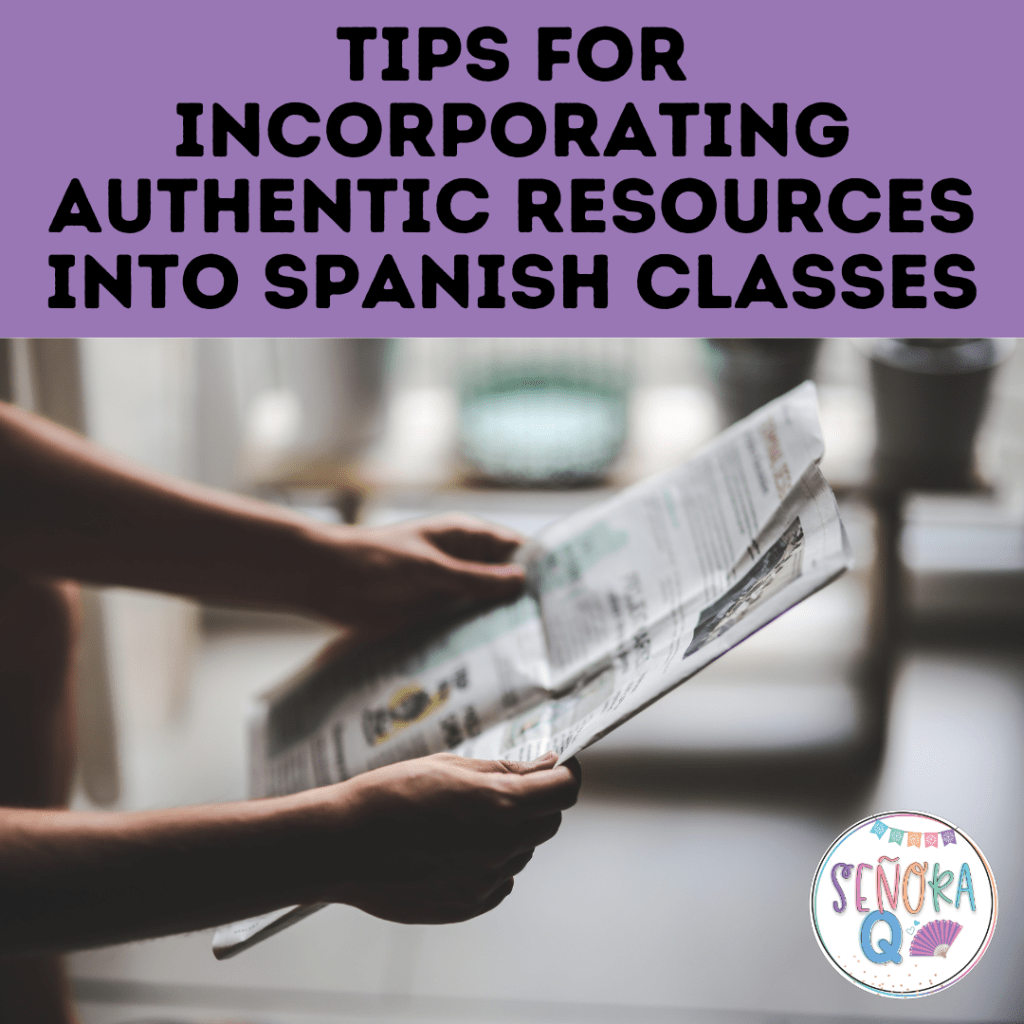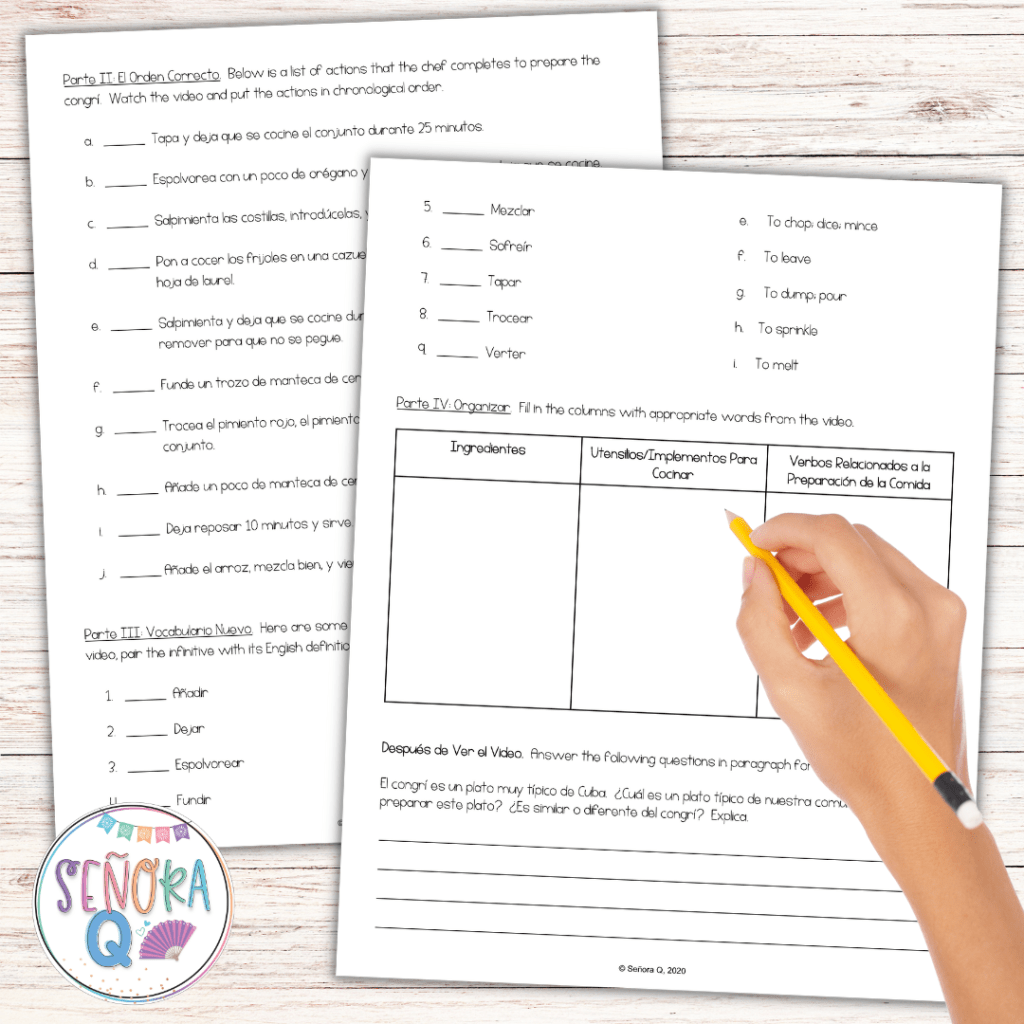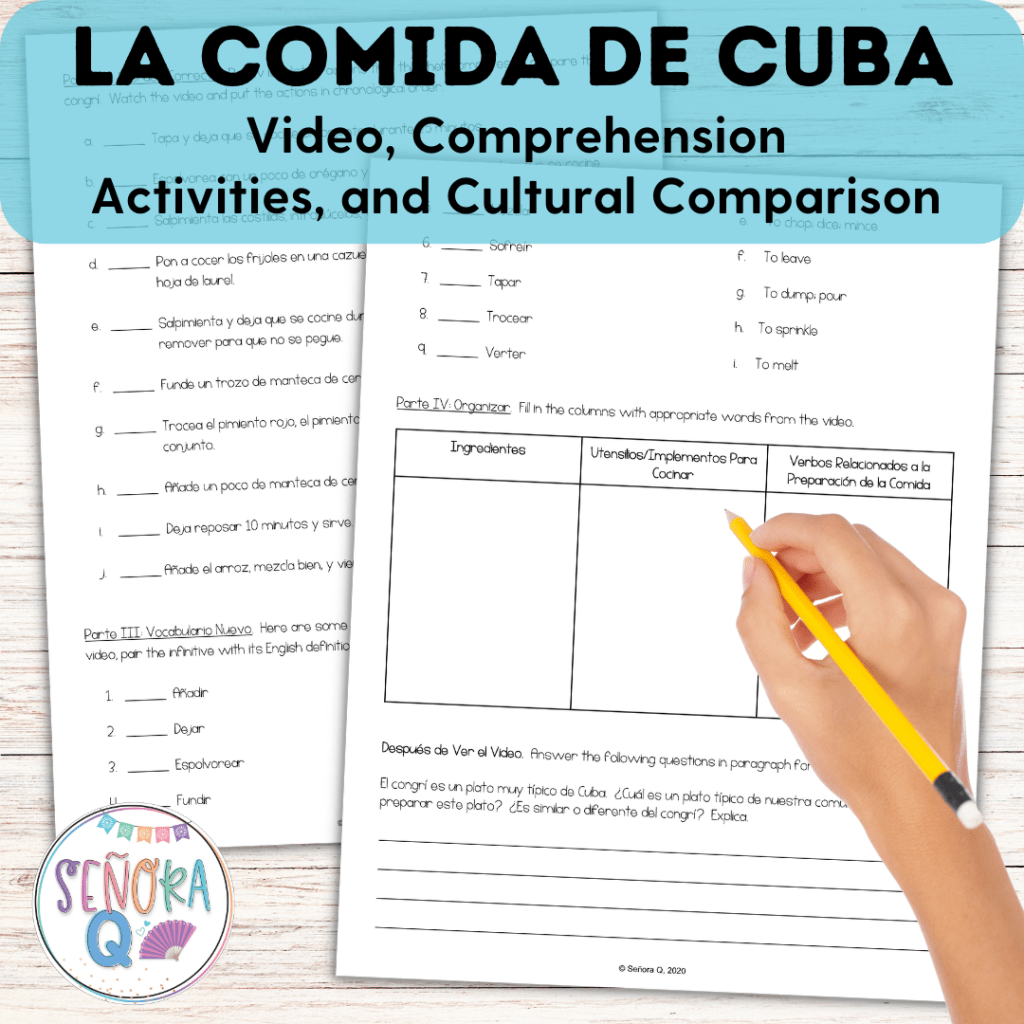


¡Hola profes! How are you doing today? I can’t believe it’s April already. I have just over two months left in the school year. How about you?
As the school year progresses and our students’ knowledge and skill levels increase, we may be looking for new ways to challenge our students to provide them with opportunities to further improve their language skills. A great way to do that is to incorporate authentic materials – that is, resources created by native Spanish speakers and intended for native Spanish speakers.
Authentic resources are great for a number of reasons. First, they provide students with examples of how the language is used in real-life scenarios, showing them that there are practical applications for what you’re studying in class. Second, there are SO MANY options to choose from, and it’s likely that you can find an authentic resource that fits in with your theme or unit. Third, authentic resources are great for adding supplemental vocabulary and for studying culture!
However, while incorporating authentic resources into your lessons can be so beneficial for students, the truth of the matter is that they can be challenging for students. Here are some strategies for utilizing authentic resources in your classroom to maximize the advantages and get the most out of your lessons that use these resources:
#1: Include a Wide Variety of Materials
Authentic materials come in various forms, including articles, videos, songs, podcasts, advertisements, social media posts, and more. Incorporate a diverse range of materials to cater to different learning styles and interests. Consider topics that resonate with your students’ lives and current events to spark their curiosity and engagement.
#2: Provide Scaffolding
Authentic materials may seem TOUGH to students, especially those at lower proficiency levels. Scaffold the learning experience by providing pre-activities to activate prior knowledge, such as vocabulary previews or background information about the topic. During and after engaging with the material, offer guided activities and comprehension tasks to support students in understanding and interpreting the content. Here are some activities that can provide scaffolding to help students better understand authentic resources:
For reading passages:
- Have students look at the title and any images and use them to make predictions about what they are going to read. This can help students figure out the context of the text and give them ideas about what some new words might mean. Visual cues from images may also help set the appropriate tone for students!
- Have your students make a list of all the cognates they recognize, with their English equivalents, or have them pick out a certain number. As a follow-up activity, you can make a master list on the board so that the whole class has the same list to help them comprehend the text. Picking out cognates is a HUGE confidence-booster for students because they see that they CAN recognize words in Spanish and that they DO understand some of what they are reading. This is great to point out to students if they get frustrated that they do not understand every single word of the text.
- Highlight 3-4 key words per paragraph. If students can identify the most important words in a paragraph, they can likely gather the main idea of the text. This also prevents students from feeling the need to know what each word means, if they only need to pick out the most important ones.
- Write a one-sentence summary of each paragraph. Being able to summarize information, especially in longer texts, will help keep students from getting bogged down with details that might be causing them stress or confusion.
- Use context clues to guess the meanings of unfamiliar words. You might ask students if they know a word that looks similar or is part of the same word family (i.e., amar, el amor). Can they identify the part of speech (noun, verb, adjective, etc.)? What surrounding words might help them make an educated guess? Students may find this activity challenging at first, but with regular practice, they get so much better!
For audios/videos:
- Have students make a list of all the words they can understand as they listen to the audio/video.
- Provide your students with a few multiple-choice or true/false questions about the audio/video.
- For your students with higher proficiency levels, you may want to ask them to correct false statements, or give them an open-ended question or two.
- Remove certain words from the audio/video transcript that your students would know. Have students fill in the missing words as they listen.
#3: Encourage Active Engagement
Promote active engagement with authentic materials by incorporating interactive tasks and discussions. Encourage students to ask questions, express opinions, and make connections to their own experiences. Collaborative activities such as group discussions, role-plays, and research-based extension tasks foster meaningful interactions and deepen comprehension.
#4: Explore the Cultural Context(s) of the Resource
Authentic materials offer valuable insights into the cultural context of Spanish-speaking communities around the world. Encourage students to explore cultural elements embedded in the materials, such as language variations, traditions, customs, and societal norms. Foster discussions about cultural similarities and differences, promoting intercultural competence and empathy. This is also great practice for any students that may go on to take the AP Spanish Language and Culture exam!
#5: Technology is your friend!
Utilize technology to access a wealth of authentic materials readily available online. Websites, social media platforms, streaming services, and digital libraries offer a wide variety of resources in Spanish. Explore platforms like YouTube, TED en Español, Newsela, and Instituto Cervantes for authentic videos, articles, and multimedia content suited to different proficiency levels and interests.
Do you want to try to include some authentic resources in your classroom, but aren’t sure where to find them or don’t have the time to come up with corresponding activities? I’ve got you covered! Check out some of these ready-to-use resources that you can use in your classroom ASAP:
I hope this was helpful and that you found some ideas that you can use in your classroom! If you have any questions about these activities, feel free to leave me a comment below or send me an email. Have a wonderful week, profes!






